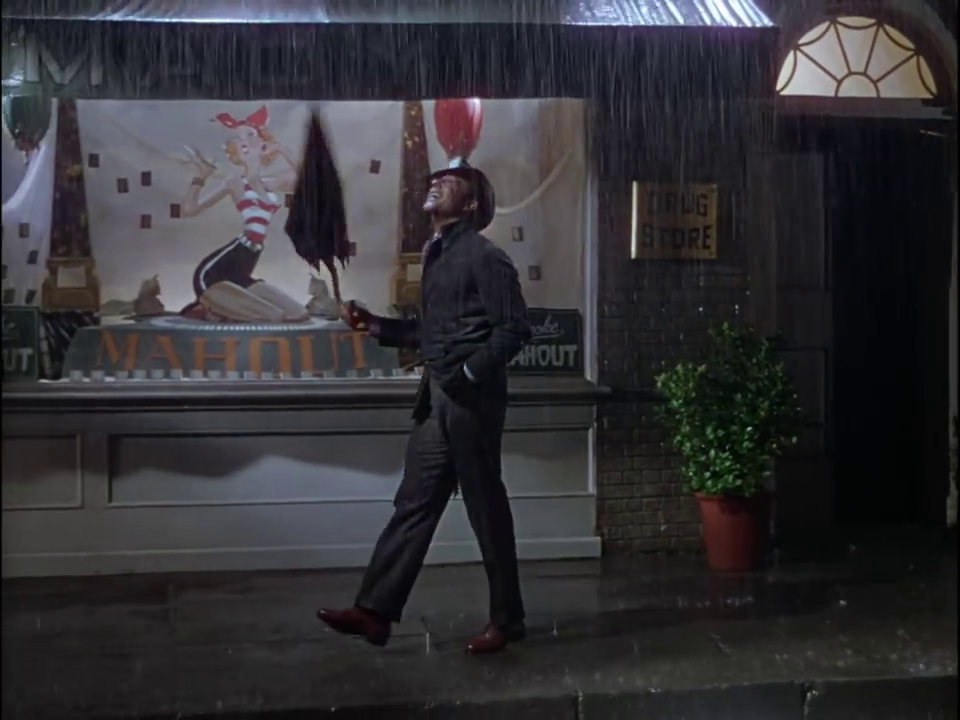Abject Divas: The Allure of the Monstrous-Feminine
An Essay and Film by Noah Weisel
Abstract:
The short film, Neris (included below), may appear to add yet another seductive monster to the pantheon of problematic female representations on-screen. As the filmmaker, I interrogate the underpinnings of this piece, which seeks to examine the sometimes dangerous and grotesque allure of the Other. Building from Julia Kristeva’s theory of Abjection and its feminine associations, I discuss the film’s attempt to perform a mimesis of abjection which invites critical engagement. Harnessing the work of Barbara Creed, which more specifically relates the theories of Kristeva and Freud to the Horror film genre, I argue that the implicit power of monstrous feminine archetypes can be put to use unravelling damaging representations on-screen. Finally, I discuss the possibility of reconstructing and subverting the myths and fables of the monstrous-feminine, in order draw attention the complicated interplay of gender, power and otherness.
Hypothesis
In filmic discourse, giving a female-presenting character sexual power has historically marked her as dangerous, or even wicked. This practice was canonized during the era in which Hollywood struggled under the Hays Code but has its roots in long established Judeo-Christian fears, religious and cultural narratives which draw boundary lines between what is Sacred and what is Desecrated — and draw them with remarkable consistency along the same lines which separate Male from Female.
The ‘terror’ surrounding female sexuality (and for an example one may watch almost any modern or classic Horror movie with a female character who is other than a victim) often manifests across movie screens as a grotesque — an ‘evil’ or villainous character, even a monster, often equipped with a vagina dentata, whose threat is represented by — if not rooted in — her reproductive capability. Indeed, both notions of sex and the sexual in film have a lingering attachment to residual Victorian influences and prescribe pretty clearly that while we might enjoy seeing sex in our films we must almost unerringly punish its participants through the narrative — especially if they’re female.
But an opportunity may exist to repurpose this grotesque: to celebrate feminine otherness, sexuality and deviance withoutpunishing it, to use the tropes of power and the signifiers of gender as a common language with which to upend stereotypes and push towards more egalitarian representations on-screen.
Neris
That was the strategy this author–admittedly a male, cisgender filmmaker–kept in mind while crafting the short film Neris, which features a probably female, potentially abhorrent, sexualized, powerful, amoral Main Character; a Wicked Woman. Neris is an unabashed ‘Weird Horror’ genre piece of Lovecraftian bent, but underpinning the tale is an investigation of the Allure of the Other; the notion that those things that are different from us, perhaps even dangerous to us, can be extraordinarily attractive. If this Otherness represents a threatening something we feel we must reject or repress, this is perhaps because we were always also drawn to it. Of course, the conflation of the ‘female’ and ‘monstrosity’ is obviously not new, and the character of Neris, whose name is simply the word “siren” in reverse, should serve to recall the alluring, deadly female creatures of Homeric legend.
The ”demoniacal potential of the feminine”
There is a long history of female monsters that includes not only sirens, but gorgons, harpies, succubi, vamps, and witches. Julia Kristeva argues persuasively in her book, Powers of Horror, that by and large ALL societally imposed ideas of what is unclean, what is taboo, horrific, what is Abject, is a disguised “confrontation with the feminine” (Kristeva, 250). Barbara Creed, in specifically analyzing female ‘monster’ characters in horror films, takes Kristeva’s theories even further, alleging:
Virtually all horror texts represent the monstrous-feminine in relation to Kristeva’s notion of maternal authority and the mapping of the self’s clean and proper body (Creed,13)
Kristeva poetically calls Abjection “the journey to the end of the night” (Kristeva, 250). She also points out that it is a feeling “unnameable” (ibid.) and “preverbal” (Kristeva, 252). Creed expands, calling it “’the place where meaning collapses,’ the place where ‘I’ am not. The abject threatens life” (Creed, 9) and adds that “The ultimate in abjection is the corpse” (ibid.).
The Abject is what we reject. What we literally or figuratively spit out (Kristeva, 256). It comes from us but is somehow distinctly apart from us (or made to be apart from us). But the border across which we place it from ourselves is manufactured, created by our culture or our religion strictly to force a separation between subject and object, between things that are ‘dirty’ and things that are ‘clean’ (Kristeva, 249). Yet it is a flimsy border (Kristeva. 255). Its prohibitions are not cosmic absolutes, but are defined solely by these manufactured boundaries (Kristeva, 259). Inasmuch as the Abject wears a sign warning us not to transgress the boundary that separates it, it also entices us, lures us to cross that boundary, to return to its preverbal, primordial bosom and there “find death, along with nirvana” (Kristeva, 254).
So, we have, in the Abject, an ancient, powerful, inescapable lodestone against which we are constantly orienting and defining ourselves. Its archaic power is, by definition, a vile and deadly power. And it is commonly aligned with the Feminine. What’s more, by aligning it with the feminine the cultural forces drawing the abject boundary line are admitting just how powerful the female figure, the mother figure, really is. As Kristeva says, “[The mother] being coded as ‘abject’ points to the considerable importance some societies attribute to women” (Kristeva, 255).
To willfully ignore, to shun representations of the Abject Female figure, to portray visions of women that are only positive, relatable, moral, socially conforming (or non-conforming in ‘friendly’ ways that are never violent, libidinous, vengeful, dangerous) and ignore the unspeakable primordial power of the Monstrous-Feminine is to miss an opportunity. And more desperately, if women in the current culture are hoping to alter a subject position often forced into alignment with the Abject, as Karen Shimakawa bluntly suggests, “deliberate assumption of the (abject) role may be one’s only recourse: if… the alternative to abjection is invisibility” (Shimakawa, 103, italics mine).
Illicit Knowledge
Karen Shimakawa’s theories surrounding Mimetic Abjection suggest that for a critical piece of mimesis to take place, the performer must be fully aware of the abject role they are assuming. This awareness – and the distance it creates between subject and object, allowing for criticism – does more than just partially nullify the potentially injurious nature of an Abject portrayal, she argues, channeling Luce Irigaray: it actually takes a step towards rectifying the underlying causes of destructive forms of abjection (Shimakawa, 105), or at the very least, salving the wounds their earlier usage has caused (Shimakawa, 128) by holding them up for analysis and comment. What’s more, “Approaching the problem of stereotyping discourse through abjection may therefore be the only route available” (Shimakawa, 101).
Applied to the making of cinema, such portrayals, such attempts to transgress a social body’s rules for abject states and beings, are inherently problematic, since they always have the potential to reinstitute the very stereotypes they seek to transgress and subvert. Yet, it is also problematic to avoid portrayals that edge into the realm of abjection, that carry implications of threat and monstrosity. Foregrounding these portayals, as Shimakawa suggests, works to highlight their already excessive, at times mythic, qualities.
The Signification of Neris
Neris is a story about someone who would be considered by the world around her to be a Monster, both because of her physical features and because of her seeming lack of morals. Far from being the antagonist of the story, however, this abject ‘monster’ is its protagonist and – as we learn at the end – also its narrator. She is shown to be a sexual creature, a maternal creature, she is shown to be powerful and she is shown victorious. Neris is, by the numbers, a femme fatale who ‘gets away with’ her crimes. Though what classifies them as “crimes” and her as villainous or even a woman, for that matter, hinges upon our understanding of her cultural transgressions.
The character of Neris lays astride several of the Monstrous-Feminine tropes identified by Barbara Creed: she is an “Archaic Mother” figure, describing for her progeny (it’s unclear in how much detail) the “primal scene,” signaling through her tale that she is a “primordial abyss, the point of origin and of end” (Creed, 17). She is “Woman as Vampire,” drawing another’s blood and tasting it with pleasure, making stark the close relationship “between sex, violence and death” (Creed, 59). It can be argued that she is “Woman as Witch,” using supernatural abilities to trap weak-willed men, demonstrating her “irrational, wily, uncontrollable power” (Kristeva, 260), in addition to the representative Crone figure of the grandmother/narrator/elder-Neris. The reveal of her waist-down biology comprised of tentacles evokes the serpentine hair of the Medusa, the vagina dentata par excellence (Creed, 111), and because of their cephalopodic nature one can almost imagine a razor-sharp, octopus beak where their trunks come together; and because we never see them, we are challenged to imagine these grandchildren Neris speaks to, suggesting that our Narrator/Protagonist is also a “Woman as Monstrous Womb” (Creed, 46).
So, with all these representations of abject femaleness on display, representations that have historically been used destructively to perpetuate ideas of women as horrifying/enticing Other, the “feminine [becoming] synonymous with a radical evil” (Kristeva, 260), can Neris function as a socially and cinematically constructive character?
There are multiple possible tactics to address this problem. The first has been discussed already — simply demonstrating authorial and performative awareness of the abject representation automatically invites viewers to take a second, deeper look at what they are witnessing, to assess the degree to which a knowing mime is being performed for them and how the specifics of that mimesis may be comparing our expectations of the representation with the way it actually plays out (Shimakawa, 103).
A second approach that I believe is operative in Neris might be described as not only deconstructive, but reconstructive: as already noted, it takes various elements of archaic stories, fables and myths and repositions their context and relations. Roland Barthes has argued that a Myth functions through a second-level (but broadly comprehensible) semiotic knowledge (Barthes, 123). Yet, if for Barthes, myth involves removing the social and political origins of ideas and presenting them as fully natural, he also insists that their historical and political character can be restored. Changing the context of mythic elements can change the effects of myth. Drawing elements from modern romance as well as horror, and importantly, by allowing the character of Neris to narrate her own fable, the film Neris attempts to perform this kind of mythic shift or reconstruction.
WORKS CITED:
Barthes, Roland. Mythologies, Roland Barthes. Translated by Annette Lavers, 25th ed., The Noonday Press, 1991.
Creed, Barbara. The Monstrous-Feminine: Film, Feminism, Psychoanalysis. Routledge, 2007.
Kristeva, Julia. “Powers of Horror.” The Portable Kristeva, edited by Kelly Oliver, Columbia University Press, 1997, pp. 248–263Shimakawa, Karen. “Mimetic Abjection/Abject Mimicry.” National Abjection: The Asian American Body Onstage, Duke University Press, 2002, pp. 99–128.







